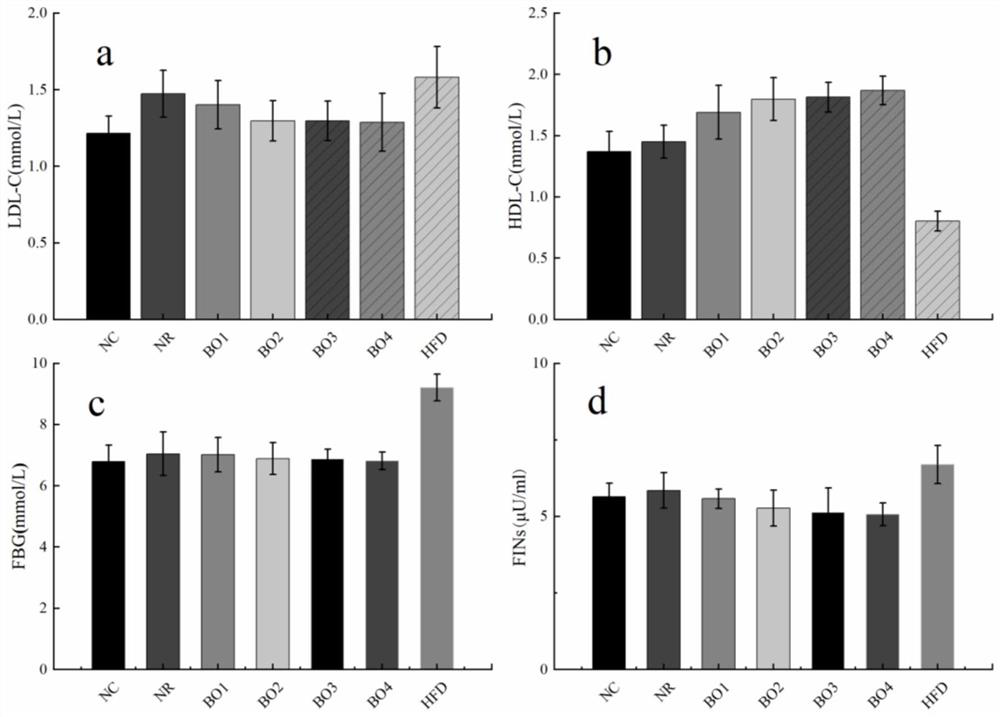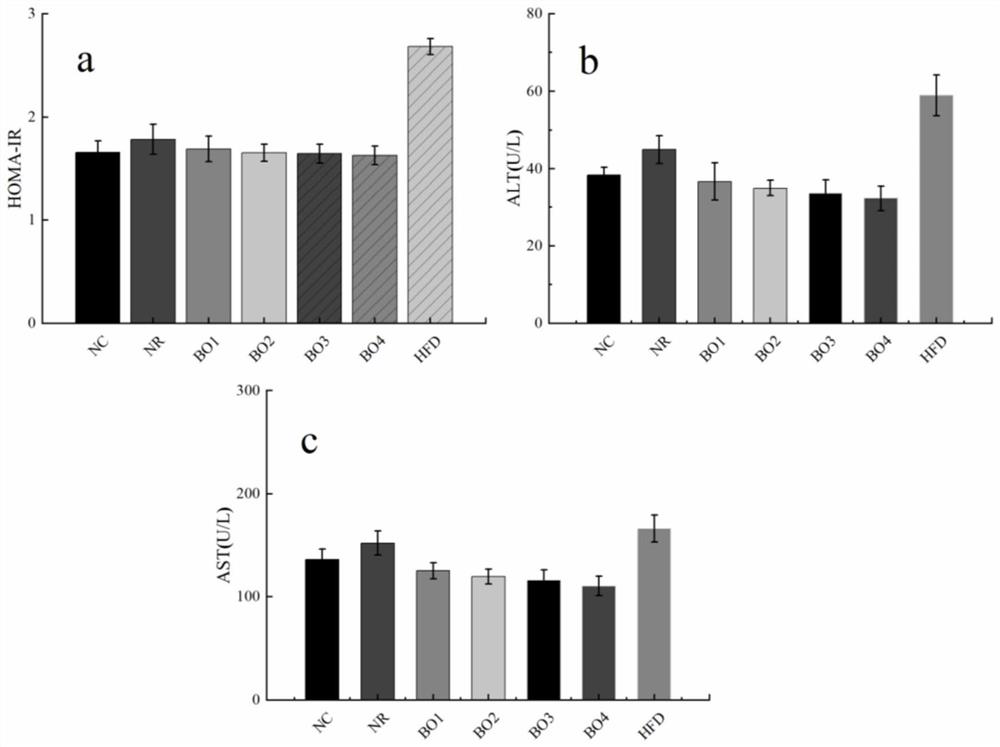Special grease base oil for functional food as well as preparation method and application of special grease base oil
A technology for functional food and base oil, applied in the production/processing of edible oil/fat, edible oil/fat phase, edible oil/fat, etc. Supplementary energy, wide melting range, and significant social benefits
- Summary
- Abstract
- Description
- Claims
- Application Information
AI Technical Summary
Problems solved by technology
Method used
Image
Examples
Embodiment 1
[0061]The fatty acids of camphor tree seed kernel oil, pangasius fish oil stearin, and perilla seed oil used in this embodiment are raw materials, and their composition and distribution are shown in Table 2. According to the mass ratio of medium carbon chain fatty acids being 63%, 65%, 67%, 69%, and the mass ratio of linoleic acid to linolenic acid being 0.5, an appropriate amount of camphor tree seed oil, soybean oil and linseed oil were weighed in In different esterification reactors, add lipase Staphylococcus caprae lipase according to 10% (w / w) of the mixed oil mass. The reaction temperature is 50°C, and the stirring reaction time is 4h. After the tribasic transesterification reaction finishes, isolate the lipase in the reaction solution, measure the tribasic transesterification rate and SFC (solid fat coefficient), obtain medium carbon chain fatty acid and account for total fatty acid mass ratio and be respectively 63%, 65%, 67% %, 69%, the mass ratio of linoleic acid to...
Embodiment 2
[0079] In this example, according to the mass ratio of medium-carbon chain fatty acids in total fatty acids being 65%, and the mass ratio of linoleic acid to linolenic acid being 0.5, 164.06g of camphor tree seed oil, 65.48g of pangasius oil stearin and 20.46g of pangasius oil were weighed. The mixed oil composed of perilla seed oil was placed in 4 reactors of the same specification, and immobilized lipase Novozyme 435, immobilized lipase Staphylococcus caprae lipase, immobilized Lipase Lipozyme RMIM, immobilized lipase Lipozyme TL IM in 4 reactors. Ternary transesterification reaction conditions are: magnetic stirring (stirrer bar 30mm * 10mm, rotating speed 100rpm), reaction temperature selects the optimal temperature recommended by each lipase, respectively (immobilized lipase Novozyme 435, immobilized lipase Lipozyme RM IM , immobilized lipase Lipozyme TL IM) at 60°C, (immobilized lipase Staphylococcus caprae lipase) at 50°C, and the reaction time was 4h.
[0080] After t...
Embodiment 3
[0084] In this example, according to the mass ratio of medium-carbon chain fatty acids in the total fatty acids being 65%, and the mass ratio of linoleic acid to linolenic acid being 0.5, 164.06g of camphor tree seed oil, 65.48g of pangasius oil stearin and 20.46g of pangasius oil were weighed. g perilla seed oil in the reactor. Ternary transesterification reaction conditions are: lipase Staphylococcus caprae lipase 5% ~ 25% (percentage of mixed oil mass), magnetic stirring (stirrer 30mm × 10mm, rotating speed 100rpm), reaction temperature is 50 ℃, reaction time is 4h .
[0085] After the reaction, the three-component transesterification rate was measured by HPLC-ELSD detection method. Comparative analysis of the effect of the amount of enzyme added on the rate of ternary transesterification, to determine the amount of enzyme added. It can be seen from Table 5 that when the amount of enzyme added is 10%, the three-basic transesterification rate is the highest, reaching 74.21...
PUM
 Login to View More
Login to View More Abstract
Description
Claims
Application Information
 Login to View More
Login to View More - Generate Ideas
- Intellectual Property
- Life Sciences
- Materials
- Tech Scout
- Unparalleled Data Quality
- Higher Quality Content
- 60% Fewer Hallucinations
Browse by: Latest US Patents, China's latest patents, Technical Efficacy Thesaurus, Application Domain, Technology Topic, Popular Technical Reports.
© 2025 PatSnap. All rights reserved.Legal|Privacy policy|Modern Slavery Act Transparency Statement|Sitemap|About US| Contact US: help@patsnap.com



